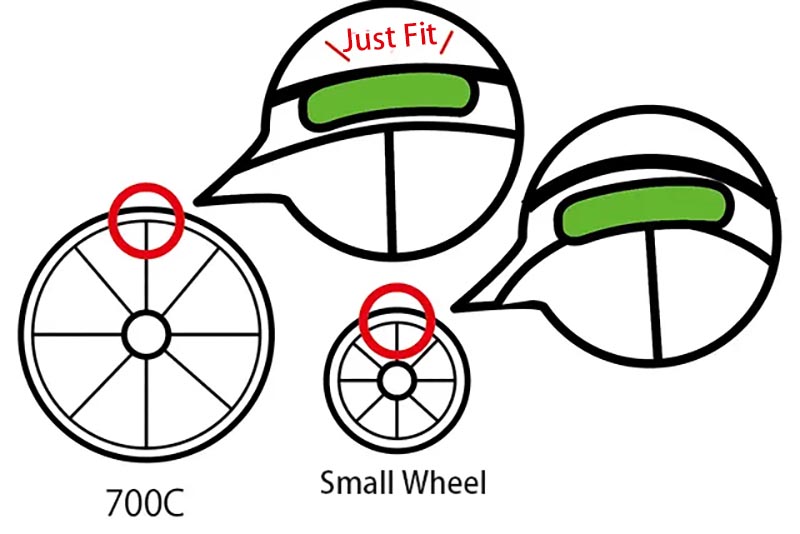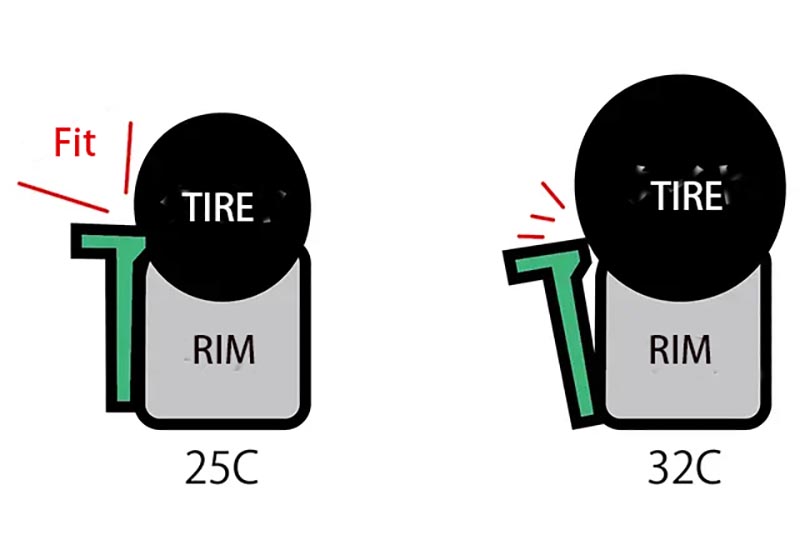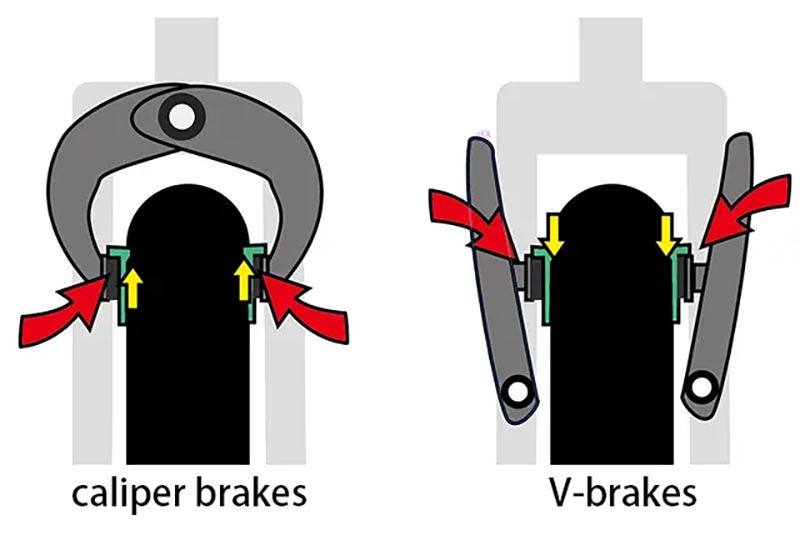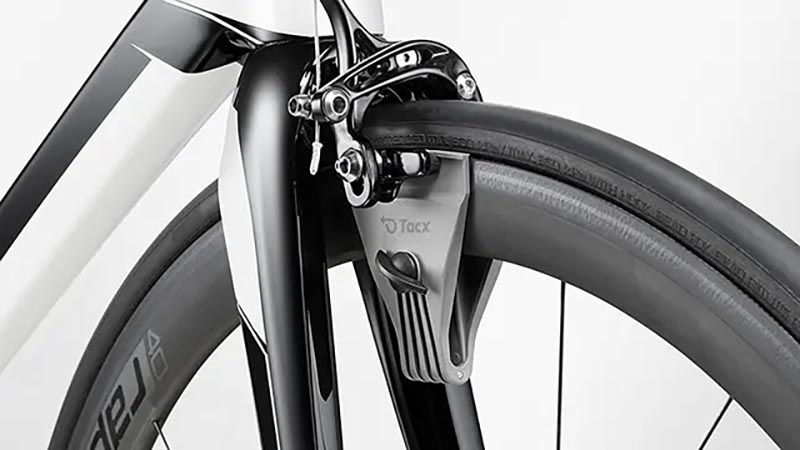One part of a road or hybrid bike that needs frequent adjustment is the brake shoes.
As the brakes are used, the wire stretches and the brake shoes wear out, no longer matching the pull of the wire, and the brakes gradually become less effective.
In addition, since brake shoes are also consumables, they will also have to be replaced once they wear out to a certain degree.
Therefore, brake shoe adjustment is a part that must be performed frequently among bicycle maintenance items.
The mounting position and angle of the brake shoes need to be adjusted slightly, and if you are not used to it, it can be a surprisingly tedious and time-consuming task.
A brake shoe tuner can streamline the brake shoe adjustment process.
I also use BIKE HAND’s brake shoe tuner (YC-193) to adjust my brake shoes.
Please refer to the following article for more information on the use of the brake tuner if you are interested.
I got some information that this useful brake tuner “cannot be used with V-brakes,” so I investigated its truth and reason.
Can the BIKE HAND brake shoe tuner (YC-193) be used with V-brakes?

Brake shoe tuners can be problematic with V-brakes and fat tires
One day I received a comment like “BIKE HAND Brake shoe Tuner (YC-193) can be used with caliper brakes, but not with V-brakes.
What? Really? the BIKE HAND brake shoe tuner can’t be used on V-brakes?” I was a little surprised.
This was because my own hybrid bike is equipped with V-brakes, and I was using this BIKE HAND Brake Shoe Tuner (YC-193) to adjust the brake shoes on that hybrid bike, so I thought, “That can’t be right.
Looking through the reviews on Amazon, one can find information such as, “It requires some ingenuity to use with V-brakes,” “Useless with V-brakes,” “Didn’t work with fat tires,” “Doesn’t work with children’s bikes,” etc.
Examples of defects in use
The following are the most common cases in which a brake shoe tuner causes problems in use.
● Smaller wheels ● Bigger tires ● V-brakes
Information on manufacturer’s website
I checked the BIKE HAND product page to see if there was any information on it, but could not find any.
There were no manuals either.
So, I gathered information on why the glitches occur and tried to figure out the cause.
Find out what causes brake shoe tuners to malfunction.
Causes of defects in small-diameter and children’s bicycles

The BIKE HAND Brake Tuner is a tool that allows the position of the brake shoes to be adjusted by placing it along the wheel rim.
And this is supposed to be designed to fit wheel sizes with a diameter called 700C, which is often used for road bikes.
Therefore, on small diameter vehicles with small wheel rims, the brake shoe tuner will not fit on the rim because of the tight curve of the arc.
This is the cause of problems when using brake shoe tuners on small wheels.
So it is not suitable for adjusting brake shoes on bicycles equipped with small wheels, such as minivelos and children’s bicycles.
Causes of problems with fat tires

We have seen information that brake shoe tuners can also fail on bicycles with fat tires, such as mountain bikes.
Road bikes use thinner tires, such as 25C.
Since a 25C tire is almost as wide as the rim, there is basically no interference with the tire when the brake shoe tuner is aligned with the rim.
However, the amount that the tire protrudes from the rim is also greater when the tire is large or blocky, such as on a mountain bike.
This is the reason why it is impossible to set the brake shoe tuner properly because it interferes with the tire when it tries to hook the tuner to the rim.
Causes of brake shoe tuner failure when used with V-brakes

The most common information that stood out about problems with the use of brake tuners was related to V-brakes.
Summarizing the information, it appears that the difference in construction between caliper brakes and V-brakes is the cause of the problem.
In the case of caliper brakes, the fulcrum is above the brake shoes, and when the brakes are applied, the brake tuners seem to be fixed in the ideal position because of the upward restraining force.
In the case of V-brakes, the fulcrum is lower than the brake shoes, so when the brakes are applied, a downward restraining force is exerted.
As a result, the brake shoe tuner is displaced downward and cannot be positioned properly.
Conclusion
Brake Shoe Tuner is only a brake shoe adjustment tool for road bikes
Both problems seem to be at the level of “manageable with ingenuity”.
Therefore, they are not at the level where the brake shoe tuner is completely useless.
The manufacturer has probably decided that the problem is not at a level that requires a warning such as “only for caliper brakes.
Judging from the information I have picked up, it seems that the BIKE HAND Brake Shoe Tuner should be considered only as a “tool for adjusting road bike brake shoes”.
So the information that the brake tuner can cause problems with V-brakes is not wrong.
And the reason I have had no problems with my V-brake equipped cross bike is probably because it is equipped with a narrow 23C tire and I use the brake tuner as a simple positioning tool and did not pay much attention to the details.
Clip-type brake shoe tuners are easier to use

Many also cited difficulties in use, such as “difficult to use,” “falls off,” and “difficult to adjust the left/right position.
There are clip-type brake shoe tuners that solve these problems.
Those who want to make adjustments more efficiently should choose a clip-type brake shoe tuner.



Comments